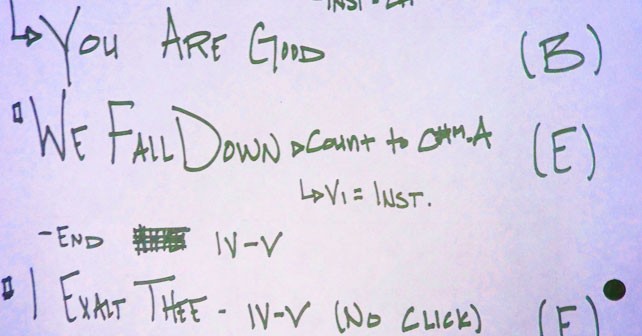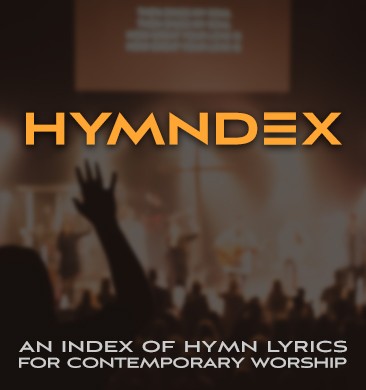Gangai Victor explains his selection process:
I believe 50% of good worship leading is all about good song selection—the right songs by themselves will influence worship positively and reduce the pressure on the worship leader. So, it goes without saying that dropping the ball on song selection will usually shipwreck the worship!
Constructing an effective set-list requires diligent praying, meticulous planning and prudent prep-work. Here are five habits of worship leaders who deliver effective set-lists consistently:
Habit #1: Listen to worship music… a lot!
As a matter of fact, I only listen to worship music… and no, I don’t miss any other music!
There’s an avalanche of new songs to pick from today—anyone who plays an instrument with a computer + Internet connection can create and release songs. The problem is in navigating the flood of material out there and discarding the low quality stuff to collect the songs that are best suited for your congregation. Some of the best sources of songs are:
- CCLI’s lists of top worship songs is a good place to start finding out songs that are trending around the world
- WorshipTogether is a great collective of songs, videos etc. from a wide variety of worship artists and labels
- Your favorite songwriters/labels who have consistently provided songs for your previous set-lists. Paul Baloche, Matt Redman, Vineyard Music, Chris Tomlin, Israel Houghton, Matt Maher, Tim Hughes, Passion and so on
- Song Discovery CDs from the folks at Worship Leader magazine
- Worship artist channels on YouTube
- WeAreWorship is another excellent resource worth checking out for new and old music
Make listening to new music a consistent habit—but don’t try to keep up with everything that gets released either—that’s a race nobody is going to win! Prioritize a few good and consistent sources and check out others whenever possible.
Lastly, don’t ignore the songs that you might be writing too—be faithful to the craft that God has gifted you with and pursue it joyfully.
Habit #2: Maintain a Song Base
Apart from listening, whenever you come across a song that stands out, add it to your Song Base, which is basically a master list of usable worship songs.
When maintaining the song base, be purposeful—don’t add every ‘nice’ song that you hear. The standard should be as high as possible to add only the best of the best songs—as for me, I probably add just one new song to my base on a monthly or bi-monthly basis.
The song base should also be neatly organized with theme, lyrics, chords, preferred key and any other aspect that is important to you.
Habit #3: Care about God
The best set-lists comes out of asking two critical questions, the first one of which is “What do people need to sing to the Lord?”, the key word being ‘need’.
When we place words and prayers into the hearts and mouths of our people through the songs that we select, we should seriously consider if the words are worth singing to the Lord. Are the lyrics authentic, rich in theology, coherent, expressive and reverent? If the answer is not a resounding “yes!”, please pick another song.
Habit #4: Care about people
Here’s the second critical question: “What can people sing to God?”, the key word being ‘can’.
We also need to consider if it’s singable for the average person in the congregation and if it’s playable for our worship team (they are people too!).
Look for songs that are simple, engaging and easy to learn. For example, no matter how beautiful the song is, if I cannot learn it in five listens, it won’t get into my song base.
Simplicity beats complexity any day.
Habit #5: Think fluidity
I’ve explained the various factors to consider when planning the flow between songs in my ebook “Creating Flow—Simple and Practical Songs Transition Ideas”—it’s FREE if you subscribe to my blog, go get it now!
Or better still, you can get “The Worship Kenbook”, which explains in greater detail, most of what I know and practice in worship ministry including song selection—you may have seen it in the list of Top 100 books on worship published by WorshipTheRock.
Okay, shameless sales pitch aside, connecting the songs with prayers, scripture etc. apart from musical concepts like key, tempo and so on is highly significant when putting together a worship set-list and should not be overlooked or ignored. Planning transitions could be the X factor in delivering an engaging, full-of-life worship session, trust me!
Most importantly, we need to spend time in prayer regularly seeking the Holy Spirit’s inspiration and guidance. Remember, prep-work cannot replace prayer and prayer cannot replace prep-work!





